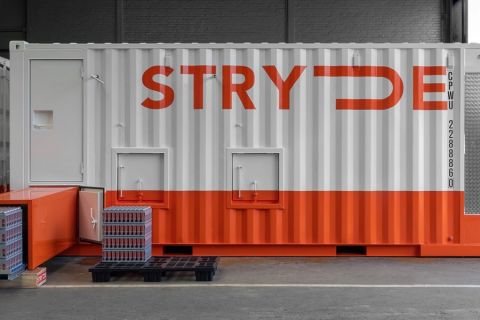It’s complicated. In investor presentations and earnings conference calls, “Wolf” is rampant: Wolfcamp, Wolfberry, Wolf-bone and even Wolffork. Amidst these Permian Basin plays are also references to Tippett, Avalon, Leonard, Cline or Penn shale, and to Spraberry and Bone Spring, including Bone Spring I, II and III.
Within Wolfcamp, there are subdivisions A, B, C and D. And, the Permian system includes several basins as well as the Northwest Shelf and the Central Basin Platform.
It can be a head-spinning effort to keep up. So how to follow? Here is a quick guide.
Wolfcamp. The Wolfcamp is the oldest Permian-age formation and consists of a complex mix of lime mudstones, detrital carbonates and dark, organic-rich shale. The Wolfcamp has long produced from vertical wellbores and is fairly pervasive in the Permian Basin. “In fact, the Wolfcamp interval is so ubiquitous, it is often mapped to demonstrate the general structure of the basin,” says Dan Morrison, managing director and senior research analyst for Global Hunter Securities LLC. He has published a series of reports on new Permian plays.
The hot new “Wolfcamp play” targets the formation horizontally with lateral wellbores through the carbonate intervals. Some references appear as “the horizontal Wolfcamp shale play,” but the play isn’t a “shale play” like that of the Barnett and Marcellus in which the lateral is landed through the shale section. Instead, it is like the Bakken in which the lateral is through the slightly more permeable and porous rock—a dolomitic siltstone, in the case of the Bakken—that is sealed at top and bottom by shale layers.
Currently, the horizontal Wolfcamp effort is focused in the southern Midland Basin in Crockett, Irion, Reagan and Upton counties, Texas, where the formation is some 1,500 feet thick at between 6,000 and 9,000 feet below the surface.
Wolfcamp also has horizontal potential in the Delaware Basin; however, the formation there is much deeper and results to date are mostly gassy, Morrison says.
Wolfcamp A, B, C and D refer to its four benches, each encased in shale. The “B” bench is the leading target, but the “C” bench is being tested and may add additional reserves and production to the play.
Tippett shale. This is a Wolfcamp layer of shale. The moniker is decreasingly in use as reference to Wolfcamp B, Morrison says.
Wolfberry. This vertical play consists of commingled production from Spraberry silty sandstone, siltstone and shale and the deeper Wolfcamp. Spraberry is found exclusively in the Midland Basin, thus the Wolfberry play is focused there.
Bone Spring I, II and III. This formation is a series of three main carbonate units that alternate with fine-grained sandstone and shale and is found exclusively in the Delaware Basin. The first and second Bone Spring sands are prevalent in the northern Delaware Basin, while the third Bone Spring is best developed in the northeastern portion and along the Central Basin Platform.
Avalon shale, Leonard shale. These are aliases for upper Bone Spring shale.
Wolfbone. In the Delaware Basin, where both Bone Spring and Wolfcamp exist, producers are commingling vertical production from each, primarily in the area of Reeves County, Texas.
Wolffork. This play is commingled vertical production from Wolfcamp and the shallower Clear Fork Group, which includes Tubb, and is mostly mudstone and sandstone.
Penn shale, Cline, Cisco/Canyon. The Cline is an Upper Pennsylvanian shaley carbonate that lies just below Wolfcamp and is being tested horizontally in the Midland Basin, mostly in Glasscock County. In the Delaware Basin, operators are looking at Upper Pennsylvanian shaley and carbonate-rich intervals in Cisco/Canyon as well. Penn shale is used at times as a generic term for both of these diverse plays.
Morrison says, “Formations in the Permian Basin are identified by a variety of names, which can lead to some confusion among observers.”
Keeping up is necessary, however: The horizontal Wolfcamp play alone may make the Bakken look small, Morrison says. “The reservoir combo that makes it work doesn’t change over thousands of square miles, there are multiple benches and—unlike the Bakken—the Wolfcamp underlies a truly massive oil field, Spraberry Field.”
Recommended Reading
TGS Awarded 2D Survey in the Sumatra Basin
2024-09-09 - TGS’ Sumatra Basin seismic acquisition is expected to be completed by the end of 2024.
TGS Releases Illinois Basin Carbon Storage Assessment
2024-09-03 - TGS’ assessment is intended to help energy companies and environmental stakeholders make informed, data-driven decisions for carbon storage projects.
STRYDE Awarded Seismic Supply Contracts in Mexico
2024-09-03 - STRYDE was awarded two seismic node supply contracts in Mexico, the company’s first projects in the country.
Transocean Contracted for Ultra-deepwater Drillship Offshore India
2024-09-04 - Transocean’s $123 million deepwater drillship will begin operations in the second quarter of 2026.
HNR Increases Permian Efficiencies with Automation Rollout
2024-09-13 - Upon completion of a pilot test of the new application, the technology will be rolled out to the rest of HNR Acquisition Corp.’s field operators.
Comments
Add new comment
This conversation is moderated according to Hart Energy community rules. Please read the rules before joining the discussion. If you’re experiencing any technical problems, please contact our customer care team.





